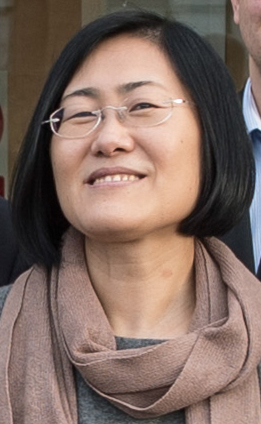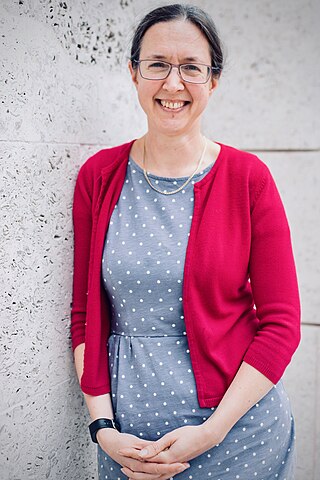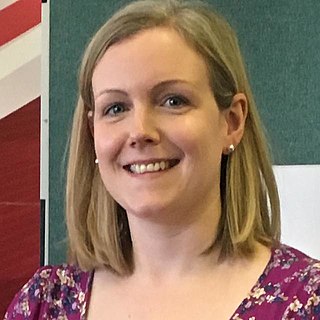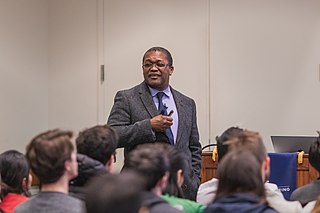
Julia Elizabeth King, Baroness Brown of Cambridge, is a British engineer and a crossbench member of the House of Lords, where she chairs the Select Committee on Science and Technology. She is the incumbent chair of the Carbon Trust and the Henry Royce Institute, and was the vice-chancellor of Aston University from 2006 to 2016.
The Doctor of Engineering is a professional doctorate in engineering and applied science. An EngD is a terminal degree similar to a PhD in engineering but applicable more in industry rather than in academia. The degree is usually aimed toward working professionals.

The Henry Royce Institute is the UK’s national institute for advanced materials research and innovation. Its vision is to identify challenges and to stimulate innovation in advanced materials research to support sustainable growth and development. Royce aims to be a "single front door" to the UK’s materials research community. Its stated mission is to “support world-recognised excellence in UK materials research, accelerating commercial exploitation of innovations, and delivering positive economic and societal impact for the UK.”

Ji-Seon Kim is a South Korean physicist. She is a Professor in the Department of Physics and Centre for Plastic Electronics at Imperial College London.
Lesley Francis Cohen is a Professor of solid-state physics at Imperial College London. She works in magnetic materials for solid-state magnetic refrigeration and spintronic applications. Cohen has served as the editor-in-chief of Applied Physics Letters since 2019.
Rylie Green is an Australian biomedical engineer who is a Professor at Imperial College London. She works on bioactive conducting polymers for applications in medical electronics.
Claire Sandrine Jacqueline Adjiman is a professor of Chemical Engineering at the Department of Chemical Engineering at Imperial College London and a Fellow of the Royal Academy of Engineering.
Eleanor Phoebe Jane Stride is a Professor of Biomaterials at St Catherine's College, Oxford. Stride engineers drug delivery systems using carefully designed microbubbles and studies how they can be used in diagnostics.

Rachel Angharad Oliver is a Professor of Materials Science at the University of Cambridge and a fellow of Robinson College, Cambridge. She works on characterisation techniques for gallium nitride materials for dark-emitting diodes and laser diodes.
Alison Jean Davenport is the Professor of Corrosion Science at the School of Metallurgy and Materials, University of Birmingham.

Eleanor Josephine Schofield is the Head of Conservation & Collections Care at the Mary Rose Trust. She is an honorary Professor at the University of Kent. In 2015 she was selected as one of the Royal Society of Chemistry 175 Faces of Chemistry.
Serena Corr is a chair in Functional Materials and Professor in Chemical and Biological Engineering at the University of Sheffield. She works on next-generation battery materials and advanced characterisation techniques for nanomaterials.

The Department of Materials is responsible for the teaching and research in materials science and engineering at Imperial College London, occupying the Royal School of Mines and Bessemer buildings on the South Kensington campus. It can trace its origins back to the metallurgy department of the Government School of Mines and Science applied to the Arts, founded in 1851.

Natalie Stingelin, Fellow of the Materials Research Society and Royal Society of Chemistry, is a materials scientist and current chair of the School of Materials Science and Engineering at the Georgia Institute of Technology, the University of Bordeaux and Imperial College. She led the European Commission Marie Curie INFORM network and is Editor-in-Chief of the Journal of Materials Chemistry C and Materials Advances.
Emma Kendrick is Professor of Energy Materials at the University of Birmingham where her work is focused on new materials for batteries and fuel cells. She is a Fellow of the Royal Society of Chemistry and Institute of Materials, Minerals and Mining.
Sandrine Elizabeth Monique Heutz is a Professor of Functional Molecular Materials at Imperial College London. She works on organic and magnetically coupled molecular materials for spintronic applications. In 2008 Heutz was awarded the Institute of Materials, Minerals and Mining Silver Medal.
Helen M. Chan is the New Jersey Zinc Professor at Lehigh University. Her work considers the development of ceramic-metal nanocomposites. She is on the board of directors of the American Ceramic Society.

Lynden A. Archer is a chemical engineer, Joseph Silbert Dean of Engineering, David Croll Director of the Energy Systems Institute, and professor of chemical engineering at Cornell University. He became a fellow of the American Physical Society in 2007 and was elected into the National Academy of Engineering in 2018. Archer's research covers polymer and hybrid materials and finds applications in energy storage technologies. His h-index is 92 by Google Scholar.
Veronica Augustyn is an American materials scientist who is a professor and the Jake & Jennifer Hooks Distinguished Scholar in Materials Science & Engineering at North Carolina State University. Her research considers the behavior of materials at electrochemical interfaces for next-generation technologies.

Ana Flávia Nogueira is a Brazilian chemist who is a Full Professor at the State University of Campinas (Unicamp) since 2004. Her research considers nanostructured materials for solar energy conversion. She was elected to the Brazilian Academy of Science in 2022.









